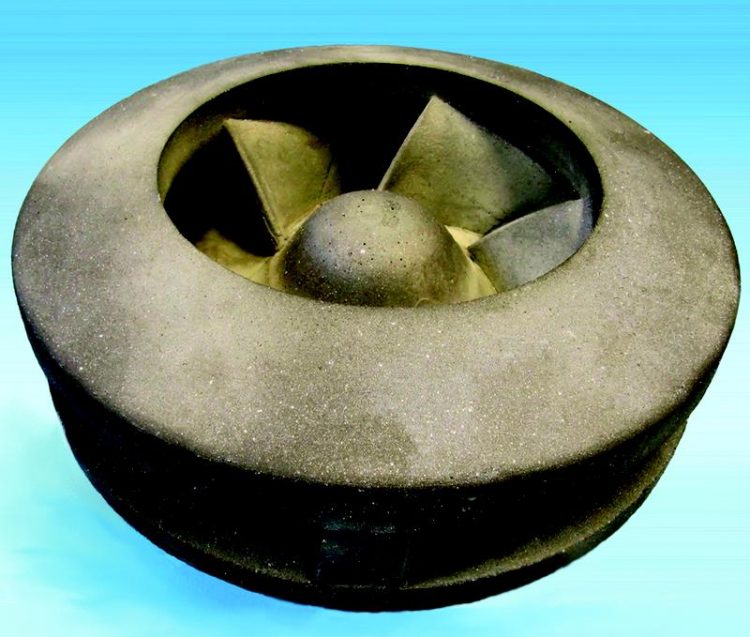Nonoxide ceramics open up new perspectives for the chemical and plant engineering

Radial flow ceramic pump impeller
Extremely hard as diamond, shrinking-free manufacturing, resistance to chemicals, wear and temperatures up to 1300 °C: Silicon carbide (SiSiC) bundles all these characteristics and is the key to competitive advantage in machinery and plant engineering.
Mineral casting principle in ceramic manufacturing expands opportunities
Scientists at Fraunhofer IKTS in Dresden have now developed a method by which the shaping of the material SiSiC for complex components can be realized cost-efficiently.
They adapted the proven production process for SiSiC-filled reaction resin concretes by SICcast Mineralguss GmbH to the ceramic manufacturing. A mixture of coarse particles with a polymeric binder is casted without pressure in open molds and subsequently tempered.
A method principle, which enables the production of large and complex components in one single step.
Increase of service life and productivity, minimization of costs
By the new method costly materials-, machinery- and personnel consuming module construction methods and combinations thereof are bypassed.
The economic process substitutes conventional materials such as metals or plastics in chemical and plant engineering, e.g. in the pump industry. With the allround material silicon carbide service life of machines can be increased by up to 100 %.
Further potential applications of the material are components of nozzles, mills or burners as well as structural components for high-precision applications in optical industry.
From April 13 to 17 you will meet IKTS scientists in Hall 6 on Booth B16.
http://www.ikts.fraunhofer.de/content/dam/ikts/de/doc2/Messen/PI_The%20materials…
Media Contact
All latest news from the category: Trade Fair News
Newest articles

A universal framework for spatial biology
SpatialData is a freely accessible tool to unify and integrate data from different omics technologies accounting for spatial information, which can provide holistic insights into health and disease. Biological processes…

How complex biological processes arise
A $20 million grant from the U.S. National Science Foundation (NSF) will support the establishment and operation of the National Synthesis Center for Emergence in the Molecular and Cellular Sciences (NCEMS) at…

Airborne single-photon lidar system achieves high-resolution 3D imaging
Compact, low-power system opens doors for photon-efficient drone and satellite-based environmental monitoring and mapping. Researchers have developed a compact and lightweight single-photon airborne lidar system that can acquire high-resolution 3D…





















